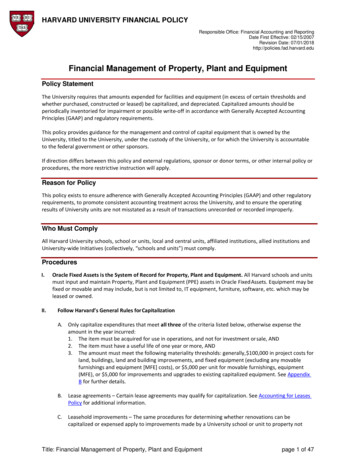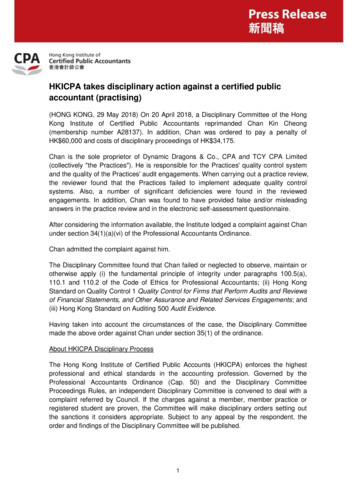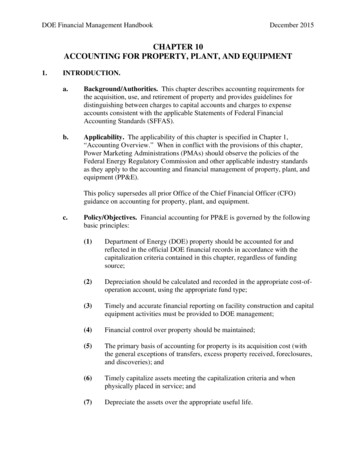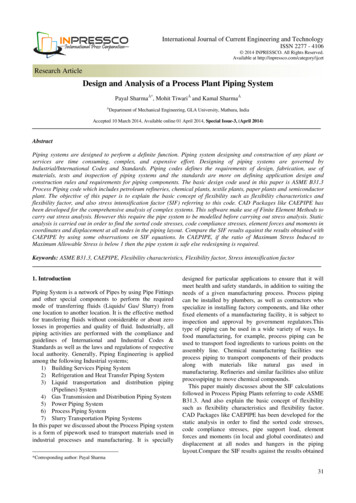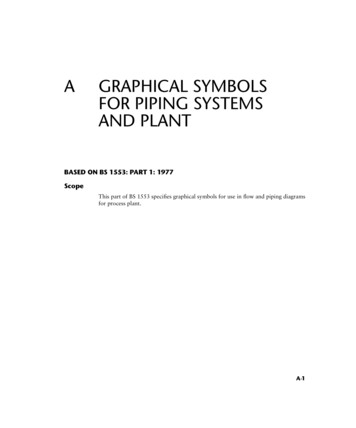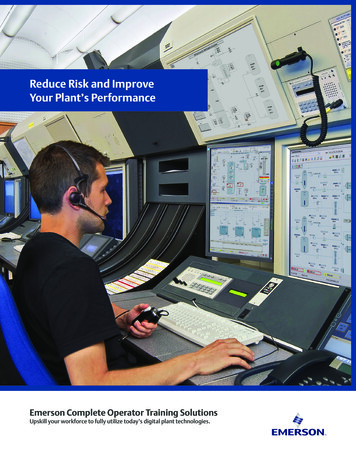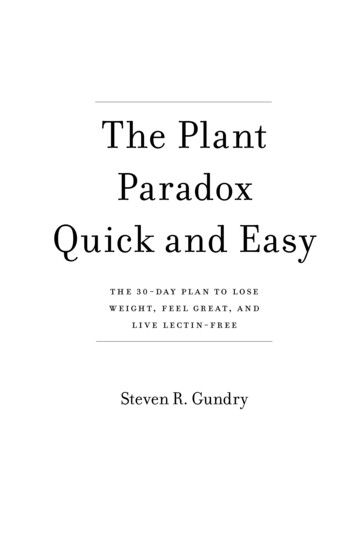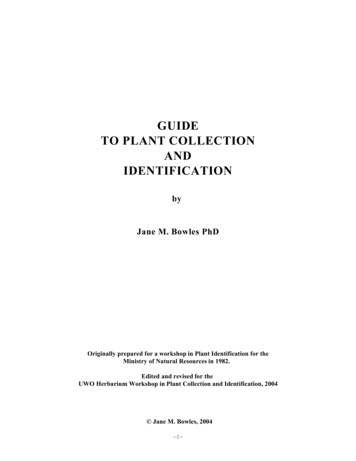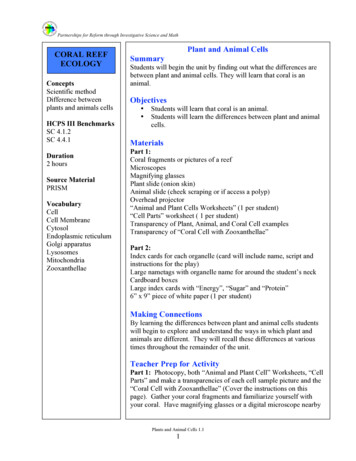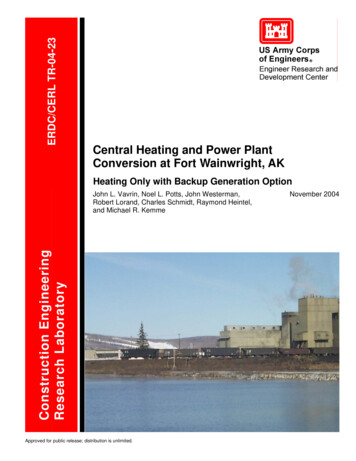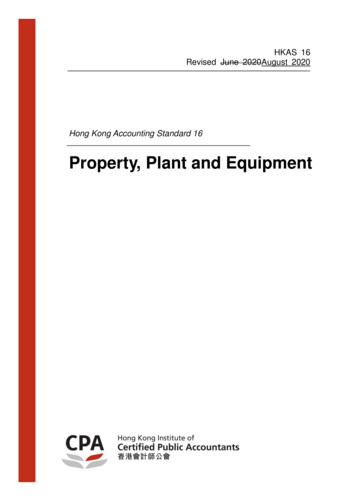
Transcription
HKAS 16Revised June 2020August 2020Hong Kong Accounting Standard 16Property, Plant and Equipment
HKAS 16 (June 2020)COPYRIGHT Copyright 2020 Hong Kong Institute of Certified Public AccountantsThis Hong Kong Financial Reporting Standard contains IFRS Foundation copyright material.Reproduction within Hong Kong in unaltered form (retaining this notice) is permitted for personal andnon-commercial use subject to the inclusion of an acknowledgment of the source. Requests and inquiriesconcerning reproduction and rights for commercial purposes within Hong Kong should be addressed tothe Director, Finance and Operation, Hong Kong Institute of Certified Public Accountants, 37/F., WuChung House, 213 Queen's Road East, Wanchai, Hong Kong.All rights in this material outside of Hong Kong are reserved by IFRS Foundation. Reproduction of HongKong Financial Reporting Standards outside of Hong Kong in unaltered form (retaining this notice) ispermitted for personal and non-commercial use only. Further information and requests for authorisationto reproduce for commercial purposes outside Hong Kong should be addressed to the IFRS Foundationat www.ifrs.org.Further details of the copyright notice form IFRS foundation is available .pdf Copyright2
HKAS 16 (March 2010February 2014)CONTENTSHONG KONG ACCOUNTING STANDARD 16PROPERTY, PLANT AND EQUIPEMENTfrom S6RECOGNITION7Initial costs11Subsequent costs12MEASUREMENT AT RECOGNITION15Elements of cost16Measurement of cost23MEASUREMENT AFTER RECOGNITION29Cost model30Revaluation model31Depreciation43Depreciable amount and depreciation period50Depreciation method60Impairment63Compensation for impairment65DERECOGNITION67DISCLOSURE73 Copyright3
HKAS 16 (January 2017June 2020)TRANSITIONAL PROVISIONS80EFFECTIVE DATE81WITHDRAWAL OF OTHER PRONOUNCEMENTS82APPENDICES:AComparison with International Accounting StandardsBAmendments to other pronouncementsCAmendments to HKAS 16 Property, Plant and Equipment—Proceeds before Intended UseBASIS FOR CONCLUSIONSAPPENDIX AAMENDMENTS TO THE BASIS FOR CONCLUSIONS ON IAS 16PROPERTY, PLANT AND EQUIPMENT—PROCEEDS BEFOREINTENDED USETABLE OF CONCORDANCEDISSENTING OPINIONSHong Kong Accounting Standard 16 Property, Plant and Equipment(HKAS 16) is set out in paragraphs 1-83 and Appendix BC. All theparagraphs have equal authority. HKAS 16 should be read in thecontext of its objective and the Basis for Conclusions, the Preface toHong Kong Financial Reporting Standards and the ConceptualFramework for Financial Reporting. HKAS 8 Accounting Policies,Changes in Accounting Estimates and Errors provides a basis forselecting and applying accounting policies in the absence of explicitguidance. Copyright4
HKAS 16 (March 2010January 2017)IntroductionIN1Hong Kong Accounting Standard 16 Property, Plant and Equipment (HKAS 16) should beapplied for annual periods beginning on or after 1 January 2005. Earlier application isencouraged.IN1AThe HKICPA amended the scope of HKAS 16 in 2014 to include bearer plants related toagricultural activity.Reasons for issuing HKAS 16IN2The objectives of Hong Kong Institute of Certified Public Accountants (HKICPA) issuing HKAS16 were to reduce or eliminate alternatives, redundancies and conflicts within the Standards, todeal with some convergence issues and to make other improvements.IN3For HKAS 16 the HKICPA’s main objective was a limited revision to provide additional guidanceand clarification on selected matters. The HKICPA did not reconsider the fundamental approachto the accounting for property, plant and equipment contained in HKAS 16.The main featuresIN4The main features of HKAS 16 are described below.ScopeIN5This Standard clarifies that an entity is required to apply the principles of this Standard to itemsof property, plant and equipment used to develop or maintain (a) biological assets and (b)mineral rights and mineral reserves such as oil, natural gas and similar non-regenerativeresources. Agriculture: Bearer Plants (Amendments to HKAS 16 and HKAS 41), issued inAugust 2014, amended the scope of this Standard to include bearer plants related to agriculturalactivity.Recognition: subsequent costsIN6An entity evaluates under the general recognition principle all property, plant and equipmentcosts at the time they are incurred. Those costs include costs incurred initially to acquire orconstruct an item of property, plant and equipment and costs incurred subsequently to add to,replace part of, or service an item.Measurement at recognition: asset dismantlement, removal andrestoration costsIN7The cost of an item of property, plant and equipment includes the costs of its dismantlement,removal or restoration, the obligation for which an entity incurs as a consequence of installingthe item. Its cost also includes the costs of its dismantlement, removal or restoration, theobligation for which an entity incurs as a consequence of using the item during a particularperiod for purposes other than to produce inventories during that period.Measurement at recognition: asset exchange transactionsIN8An entity is required to measure an item of property, plant and equipment acquired in exchangefor a non-monetary asset or assets, or a combination of monetary and non-monetary assets, atfair value unless the exchange transaction lacks commercial substance.Measurement after recognition: revaluation modelIN9If fair value can be measured reliably, an entity may carry all items of property, plant andequipment of a class at a revalued amount, which is the fair value of the items at the date of therevaluation less any subsequent accumulated depreciation and accumulated impairmentlosses. Copyright5
HKAS 16 (January 2017September 2018)Depreciation: unit of measureIN10An entity is required to determine the depreciation charge separately for each significant part ofan item of property, plant and equipment.Depreciation: depreciable amountIN11An entity is required to measure the residual value of an item of property, plant and equipmentas the amount it estimates it would receive currently for the asset if the asset were already of theage and in the condition expected at the end of its useful life.Depreciation: depreciation periodIN12An entity is required to begin depreciating an item of property, plant and equipment when it isavailable for use and to continue depreciating it until it is derecognised, even if during thatperiod the item is idle.Derecognition: derecognition dateIN13An entity is required to derecognise the carrying amount of an item of property, plant andequipment that it disposes of on the date the criteria for the sale of goods in HKAS 18 Revenuewould be metthe recipient obtains control of that item in accordance with the requirements fordetermining when a performance obligation is satisfied in HKFRS 15 Revenue from Contractswith Customers.IN14An entity is required to derecognise the carrying amount of a part of an item of property, plantand equipment if that part has been replaced and the entity has included the cost of thereplacement in the carrying amount of the item.Derecognition: gain classificationIN15An entity cannot classify as revenue a gain it realises on the disposal of an item of property,plant and equipment. Copyright6
HKAS 16 (January 2017July 2019)Hong Kong Accounting Standard 16Property, Plant and EquipmentObjective1The objective of this Standard is to prescribe the accounting treatment for property, plant andequipment so that users of the financial statements can discern information about an entity’sinvestment in its property, plant and equipment and the changes in such investment. Theprincipal issues in accounting for property, plant and equipment are the recognition of the assets,the determination of their carrying amounts and the depreciation charges and impairment lossesto be recognised in relation to them.Scope2This Standard shall be applied in accounting for property, plant and equipment exceptwhen another Standard requires or permits a different accounting treatment.3This Standard does not apply to:(a)property, plant and equipment classified as held for sale in accordance with HKFRS 5Non-current Assets Held for Sale and Discontinued Operations.(b)biological assets related to agricultural activity other than bearer plants (see HKAS 41Agriculture). This Standard applies to bearer plants but it does not apply to the produceon bearer plants.(c)the recognition and measurement of exploration and evaluation assets (see HKFRS 6Exploration for and Evaluation of Mineral Resources).(d)mineral rights and mineral reserves such as oil, natural gas and similarnon-regenerative resources.However, this Standard applies to property, plant and equipment used to develop or maintainthe assets described in (b) - (d).4[Deleted] Other Standards may require recognition of an item of property, plant and equipmentbased on an approach different from that in this Standard. For example, HKAS 17 Leasesrequires an entity to evaluate its recognition of an item of leased property, plant and equipmenton the basis of the transfer of risks and rewards. However, in such cases other aspects of theaccounting treatment for these assets, including depreciation, are prescribed by this Standard.5An entity using the cost model for investment property in accordance with HKAS 40 InvestmentProperty shall use the cost model in this Standard for owned investment property.Definitions6The following terms are used in this Standard with the meanings specified:A bearer plant is a living plant that:(a)is used in the production or supply of agricultural produce;(b)is expected to bear produce for more than one period; and(c)has a remote likelihood of being sold as agricultural produce, except forincidental scrap sales.(Paragraphs 5A–5B of HKAS 41 elaborate on this definition of a bearer plant.)Carrying amount is the amount at which an asset is recognised after deducting anyaccumulated depreciation and accumulated impairment losses. Copyright7
HKAS 16 (January 2017August 2020)Cost is the amount of cash or cash equivalents paid or the fair value of otherconsideration given to acquire an asset at the time of its acquisition or construction or,where applicable, the amount attributed to that asset when initially recognised inaccordance with the specific requirements of other HKFRSs, e.g. HKFRS 2 Share-basedPayment.Depreciable amount is the cost of an asset, or other amount substituted for cost, less itsresidual value.Depreciation is the systematic allocation of the depreciable amount of an asset over itsuseful life.Entity-specific value is the present value of the cash flows an entity expects to arise fromthe continuing use of an asset and from its disposal at the end of its useful life or expectsto incur when settling a liability.Fair value is the price that would be received to sell an asset or paid to transfer a liabilityin an orderly transaction between market participants at the measurement date. (SeeHKFRS 13 Fair Value Measurement).An impairment loss is the amount by which the carrying amount of an asset exceeds itsrecoverable amount.Property, plant and equipment are tangible items that:(a)are held for use in the production or supply of goods or services, for rental toothers, or for administrative purposes; and(b)are expected to be used during more than one period.Recoverable amount is the higher of an asset’s fair value less costs to sell of disposal andits value in use.The residual value of an asset is the estimated amount that an entity would currentlyobtain from disposal of the asset, after deducting the estimated costs of disposal, if theasset were already of the age and in the condition expected at the end of its useful life.Useful life is:(a)the period over which an asset is expected to be available for use by an entity; or(b)the number of production or similar units expected to be obtained from the assetby an entity.Recognition78.The cost of an item of property, plant and equipment shall be recognised as an asset if,and only if:(a)it is probable that future economic benefits associated with the item will flow tothe entity; and(b)the cost of the item can be measured reliably.Items such as spare parts, stand-by equipment and servicing equipment are recognised inaccordance with this HKFRS when they meet the definition of property, plant and equipment.Otherwise, such items are classified as inventory. Copyright8
HKAS 16 (January 2017July 2019)9This Standard does not prescribe the unit of measure for recognition, ie what constitutes an itemof property, plant and equipment. Thus, judgement is required in applying the recognitioncriteria to an entity’s specific circumstances. It may be appropriate to aggregate individuallyinsignificant items, such as moulds, tools and dies, and to apply the criteria to the aggregatevalue.10An entity evaluates under this recognition principle all its property, plant and equipment costs atthe time they are incurred. These costs include costs incurred initially to acquire or construct anitem of property, plant and equipment and costs incurred subsequently to add to, replace part of,or service it. The cost of an item of property, plant and equipment may include costs incurredrelating to leases of assets that are used to construct, add to, replace part of or service an itemof property, plant and equipment, such as depreciation of right-of-use assets.Initial costs11Items of property, plant and equipment may be acquired for safety or environmental reasons.The acquisition of such property, plant and equipment, although not directly increasing thefuture economic benefits of any particular existing item of property, plant and equipment, maybe necessary for an entity to obtain the future economic benefits from its other assets. Suchitems of property, plant and equipment qualify for recognition as assets because they enable anentity to derive future econom
deal with some convergence issues and to make other improvements. IN3 For HKAS 16 the HKICPA’s main objective was a limited revision to provide additional guidance and clarification on selected matters. The HKICPA did not reconsider the fundamental approach to the accounting for property, plant and equipment contained in HKAS 16.
